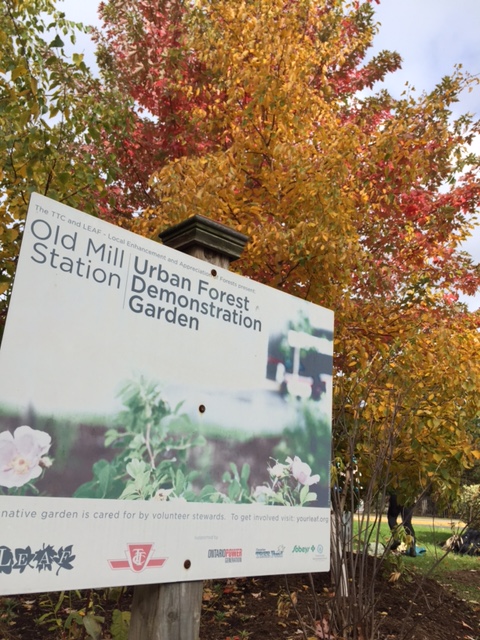At LEAF, autumn functions as both the signal and stimulus for us to prepare our gardens for their long winter’s sleep. As LEAF’s Volunteer and Stewardship Intern I was responsible for leading/participating in four LEAF Urban Demonstration Garden closures, the primary goal: taking steps to ensure a healthy spring. Joined by LEAF’s volunteer stewards we pruned back some of the summer growth to encourage a flurry of growth next season.

We targeted large populations of suckers, the majority being dogwood rhizomes that tunnel unseen below the soil and proliferate above ground. St.Clair garden stood apart as the garden with the largest trees and shrubs. We ended the work party with a pile of clippings as large as the highbush cranberry shrub that towers in the back of the garden.
The High Park, Spadina, and Bathurst gardens took less time, but were still an adventure in learning alongside volunteers, not only attempting to identify species, but also learning how to properly prune each species. We also re-evaluated the location of each plant and were surprised by the migration of some species such as milkweed, meadowsweet and nannyberry.

Ruminating after the garden closures I could visualize a strong connection between human and plant activity, as both are affected by the seasons. Autumn represents a time for preparation, to get both your garden and yourself ready for the cold winter nights, and the inactivity brought on by freezing temperatures.
The coming winter will provide time to ruminate on the expectations of next year, to take a break from active garden duty, and to reflect on the feats accomplished thus far. In short, winter represents a time for rest. In the garden, it’s almost as if time slows down as plant systems begin to react to the cold and lack of sunlight and growth is stalled. Grounded and inhibited, yet still alive.

This is the lesson I took from LEAF’s fall work parties: growing isn’t always showy or active. Often it involves seeking new knowledge, which requires time, dedication, and a whole lot of patience. In winter’s deep sleep we continue to grow, just at a slower pace. We can dedicate ourselves to a new vocation and continue our learning indoors.
If you are interested in becoming a LEAF Garden Steward in 2016, fill out the volunteer application form. We always need more help keeping the gardens beautiful!
LEAF’s Urban Forest Demonstration Gardens are supported Ontario Power Generation’s Biodiversity Program and the Toronto Transit Commission.
Laura Squires is LEAF’s Volunteer & Stewardship Intern.
